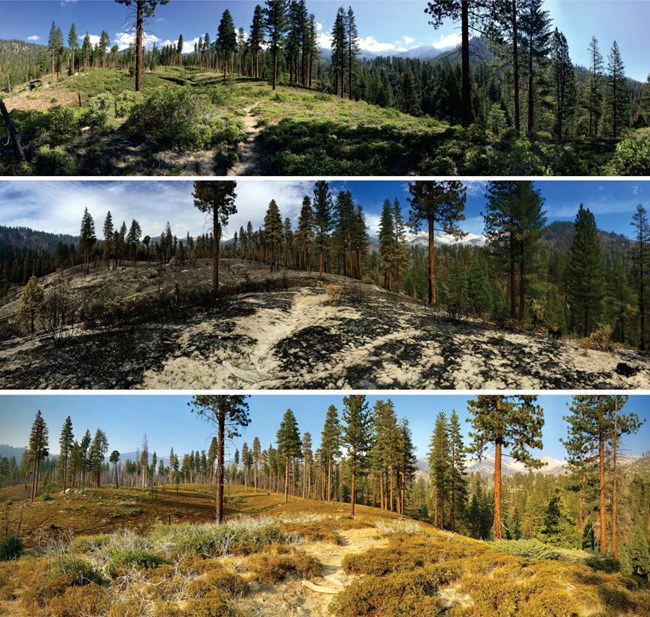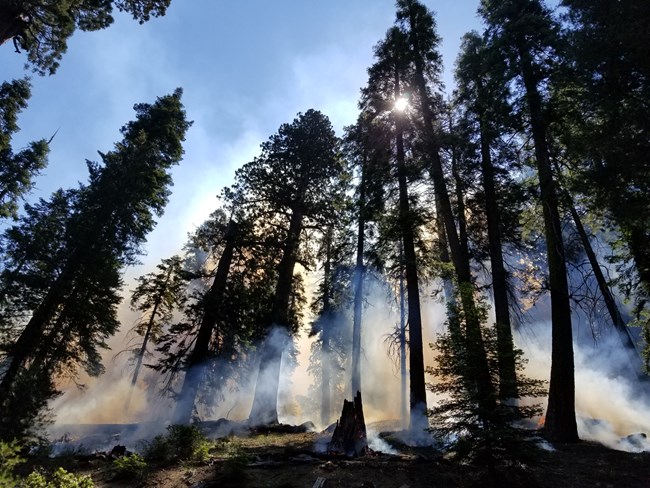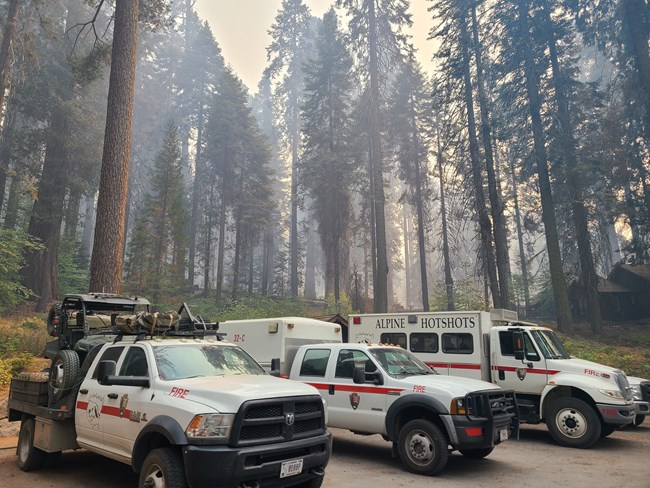
NPS Photo - K. Howard and J. James Fire has been a natural part of the Sierra Nevada ecosystem for centuries. Lightning-caused fires swept through these plant communities at intervals that provided conditions for many plant species to regenerate. In addition, Native Americans frequently used fire to clear vegetation to improve visibility and productivity in forests and grasslands. Fire thins competing species, recycles nutrients into the soil, releases and scarifies seeds, and opens holes in the forest canopy for sunlight to enter. All of these are critical to forest health and natural cycles of growth and decomposition. Plants are not the only living things that have evolved with and are adapted to fire. Animal species are just as much a part of the "fire environment." With the increased forage that results after a fire, many animals low on the food chain experience increases in their populations; therefore species above them on the food chain also benefit. For example, if rodents like mice and squirrels benefit from the pulse of growth in grasses and shrubs postfire, predators like hawks, coyotes, and gopher snakes will also likely have populations boosts in subsequent years. Despite the evidence that fire is a necessary element in the Sierra Nevada, over most of the past century people have feared and suppressed it whenever possible. Especially in the western United States, the accumulation of dead forest litter and duff during that time now presents extreme hazards to the health of the trees, soil, and wildlife, to humans living in these areas, and to the taxpayer who has to fund the fighting of catastrophic wildfires. 
NPS Photo - M. Theune Prescribed fire is used in Sequoia and Kings Canyon National Parks to restore this natural process to the forests. These fires are strategically used to reduce the risks that unnaturally heavy fuels pose to humans and ecosystems. You can learn more about wild and prescribed fire in this overview. Learn about Planned Projects (prescribed burns or mechanical fuel reduction treaments) the parks have for this year, developed from our Annual Fuels Treatment Plan and the work that was completed last year. 
NPS Photo - M. Theune 
NPS Photo - M. Theune By having recent fire history in places like the Giant Forest, the area was much safer not only for fire crews to work in, but to protect historical assets like the Giant Forest Museum during the 2021 KNP Complex Fire. |
Last updated: October 20, 2023
